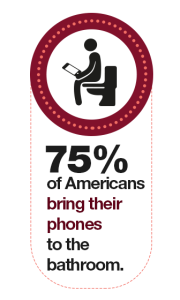 Mobile devices became an integral part of our civilization. Cells accompany us practically 24/7. We treat them as our personal assistants, helping us to go through the day from a to izzard – they organize tasks, communicate with others, navigate through cities, and entertain us. They’re relatively cheap, available to all of us and user-friendly at the same time. 10 years ago, when Apple launched their first smartphone, people couldn’t predict how popular they will become – at first they were only expensive fads.
Mobile devices became an integral part of our civilization. Cells accompany us practically 24/7. We treat them as our personal assistants, helping us to go through the day from a to izzard – they organize tasks, communicate with others, navigate through cities, and entertain us. They’re relatively cheap, available to all of us and user-friendly at the same time. 10 years ago, when Apple launched their first smartphone, people couldn’t predict how popular they will become – at first they were only expensive fads.
Trends are pretty obvious – mobile’s presence in the globe is widening, and its market position grows stronger. Despite the initial trust issues, we’ve learned to buy with mobile apps. Digital marketers noticed it, and some of them decided to specialize in mobile marketing. Today, everyone knows that this branch of digital marketing has more to it than only call centers and bulk SMS campaigns. It’s also precise behavioral profiling of app’s users and making the best of those profiles; after all, who wouldn’t like to receive fully personalized marketing messages, tailored to one’s habits, needs, and even language and location (read: relevant and not annoying). It’s also about the push messages – fast and efficient like texts, which perfectly fit mobile channel’s information traffic pace. Furthermore, mobile marketing is a part of the omnichannel. Smartphones blurred the line between the online and offline, and now with integrated marketing automation platforms (for both: mobile and desktop) they help marketers in blending data streams from various sources. And finally, mobile channel’s major part is social media. By accessing it via their smart gadgets, people create something we could perceive as the second layer of our reality, where we build the virtual avatars to represent us and where part of daily activities takes place.
Mobile marketing and social media stats are the core of the recent APPmanago’s infographic. We decided to share it with you.

 Follow
Follow
















